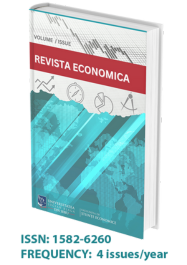
WORKING WITH LARGE OBJECTS IN APPLICATION DEVELOPMENT
LAZAROVA Vanya, University of National and World Economy
Abstract:
In this paper are considered the specifics of the manipulation of large objects in the database of an application - recording, storage, processing, transmission over the network. Some literature sources dealing with this topic will be reviewed and after that some specifics of working with large objects will be presented. The paper will also address the advantages of using large objects in application development. Some new software products that assist the storage of large objects will also be reviewed. Large Objects (LOBs) are a set of data types in Oracle DBMS, Microsoft SQL Server etc. LOBs are designed to store large amount of data. Large objects are for huge files such as an audio and video files. LOBs can support a maximum file size ranging from 2 GB to 8 GB. Large objects are suitable for storing semi-structured and unstructured data. Storing data in large objects allows data to be accessed and manipulated efficiently within an application. The data in the application s database, with the accumulation of many audio and video files, will at some point begin to meet the rules of big data, and its processing and storage must be carried out by specialized big data environments. The problems of transferring and storing large objects in specialized big data environments will be discussed. Data transfer between different environments will be addressed. The format and content of the data must be preserved, and this leads to the need to comply with several conditions, which will be considered.
Keywords: Large Objects, LOBs, CLOBs, BLOBs
JEL Classification: O33
Volume: 75, Issue: 2
Pages: 98 - 104
Publication date: June, 2023
DOI: 10.56043/reveco-2023-0020
Download the article: http://economice.ulbsibiu.ro/revista.economica/archive/75210lazarova.pdf
LAZAROVA Vanya, 2023, WORKING WITH LARGE OBJECTS IN APPLICATION DEVELOPMENT, Revista Economică, Lucian Blaga University of Sibiu, Faculty of Economic Sciences, vol.75(2), pages 98-104, June. DOI: https://doi.org/10.56043/reveco-2023-0020

All content is licensed under the
Creative Commons Attribution 4.0 International License (CC BY 4.0)
.








